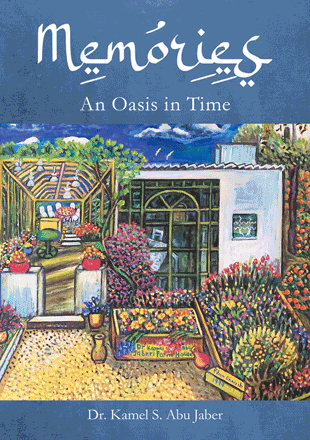You are here
Prominent Jordanian scholar narrates Salt’s past
By Saeb Rawashdeh - Nov 16,2017 - Last updated at Nov 16,2017

Raouf Abu Jaber
AMMAN — Historical retrospective was the main topic explored in the lecture “Al Salt during the last 300 years” held at the British Institute in Amman on Monday.
“I happen to be the product of the city itself as I lived there my first 10 years, before I moved to Amman to attend the Bishop’s school,” said Raouf Abu Jaber, a Jordanian historian who received his PhD from the University of Oxford.
The 92-year-old scholar’s presentation attracted not only local and international scientists but also British Ambassador to Jordan Edward Oakden and French Ambassador to Jordan David Bertolotti.
“Ayybids used the place [Ras Al Emir] as a watchtower with a small garrison to control movements of caravans between Palestine and Transjordan,” noted Abu Jaber, who said his relation to Al Salt has remained strong over the years.
He said the castle played an important role for the settlement and life of inhabitants until the year 1874, when Ottoman administration started building saraya, the government house in the centre of the town.
“The Ottomans occupied this part of Bilad Sham in 1518 and, with their eagerness to control the collection of taxes, they carried out the first census in 1525/26, only seven years after the conquest. After finding some discrepancies, they organised another census in 1595/96,” the historian said.
“In 1812, the population consisted of 400 Muslim families and 18 Christian families, all Greek Orthodox, who were living in perfect equality together,” Abu Jaber stressed, noting that the town was divided into three neighbourhoods.
The village of Fuheis became an important settlement for the Christian families from Salt, he continued.
“I must explained that, in that period, the area was contested by four factions: Adwan federation, Beni Sahar, Abadis and Saltis [inhabitants of the city]. People of the town had many factions, but they were always very attached to their place and they fought as one unit,” the scholar explained.
Salt residents had their own cavalry which they used against Beni Sahar forces and Adwan horsmen, he noted.
The town and surrounding areas were famous for two products, grapes and figs, Abu Jaber highlighted, noting that, when sweets were in short supply, raisins made of grapes were sold in Jerusalem from Salt.
Another significant event in the history of the city was the movement of Nabulsi families to Salt, starting in 1834 when Ibrahim Pasha was confronted with the revolt in Jabal Nablus. When the fight broke out between two parties, the leaders of the revolt found refuge with Karaki tribes, the historian said.
“Karaki tribes tried to protect them but they were unable to do so effectively against the the army that had the artillery,” the expert noted.
Expeditionary forces first attacked Karak by cavalry and suffered heavy losses. “In one day, they had 1,500 people dead or wounded,” Abu Jaber stated.
As a retaliation for its losses, the invading army started bombarding Karak and destroyed part of the castle, he said.
In the second part of the 19th century, the population of Salt increased and Nabulsi families who settled brought with them their habits and dishes, like the well-known sweets knafeh, the scholar continued.
Stone houses were another innovation, which came from Nablus, he said, stressing that, in the 1930s, the town counted around 20,000 inhabitants.
Abu Jaber’s PhD at the University of Oxford was published in 1989 under the title “Pioneers Over Jordan: The Frontiers of Settlement in Transjordan, 1850-1914”. He has written over 100 articles, five books in English and 11 in Arabic.
Related Articles
AMMAN — Noted historian Raouf Abu Jaber will launch his new book "Nazareth — City of Christian Love" at the National Library in Amman on Thu
Memories: An Oasis in TimeKamel S. Abu JaberUK: Hesperus Press Limited, 2023Pp.
AMMAN — Former minister of state Sultan Adwan on Saturday died at one of Amman’s hospitals, the Jordan News Agency, Petra, reported. H













